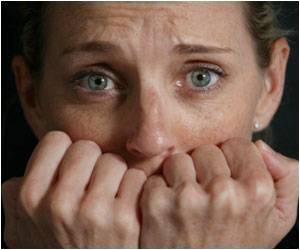Experts suggest that identifying the distinctive traits specific to obsessive-compulsive disorder can aid individuals in comprehending the mental health disorder.

What makes an obsession? A systematic-review and meta-analysis on the specific characteristics of intrusive cognitions in OCD in comparison with other clinical and non-clinical populations
Go to source). It may be normal to have intrusive thoughts such as a random or inappropriate idea popping into people’s heads, or to feel compelled to double-check and triple-check that the front door is locked. Typically they go away and people go about our lives. But for some, the intrusive thoughts can become uncontrollable, persistent and invasive, and so they may try to alleviate them through compulsive rituals: repeatedly washing their hands, for instance, if they fear being contaminated from touching surfaces like doors and countertops. This indicates that the person has obsessive-compulsive disorder, or OCD.
‘The new study emphasizes the profound distress triggered by the intrusive thoughts connected to obsessive-compulsive disorder. #ocd #compulsivedisorder #mentalhealth #intrusive ’





But how exactly do the obsessive thoughts of people with OCD differ from the more garden-variety intrusive thoughts all people experience from time to time? To understand, a team from the University of Montreal in Canada, conducted a systematic review. "The intrusive thoughts provoke higher levels of guilt than in other anxiety-related disorders," said Jean-Sebastien Audet, a doctoral student at the varsity. The Disturbing Nature of Intrusive Thoughts in OCD
"They are also experienced as more unpleasant, unacceptable and uncontrollable, and are associated with a higher degree of fear that the thought will become a reality," he added. This distress is caused by the clash between the content of the intrusive thoughts and the person's self-perception. The dissonance is particularly intense when the person has disturbing, forbidden thoughts such as "maybe I'm a pedophile" when in fact they have no such urges."People with OCD think their actions could put them in danger -- for example, their carelessness could cause them to be robbed or get sick," explained Audet. "By contrast, depressed people don't believe they are a danger to themselves but are consumed by feelings of worthlessness, and people with anxiety perceive themselves as victims of external danger."Determining those characteristics also facilitates early diagnosis and treatment.In most cases, OCD responds well to medication and a type of therapy known as "exposure and response prevention." This approach involves exposing people to situations that cause or trigger their obsessive thoughts and then helping them learn new ways of dealing with their anxiety instead of engaging in their usual rituals.
Reference:
- What makes an obsession? A systematic‐review and meta‐analysis on the specific characteristics of intrusive cognitions in OCD in comparison with other clinical and non‐clinical populations - (https://onlinelibrary.wiley.com/doi/10.1002/cpp.2887)
Source-IANS










